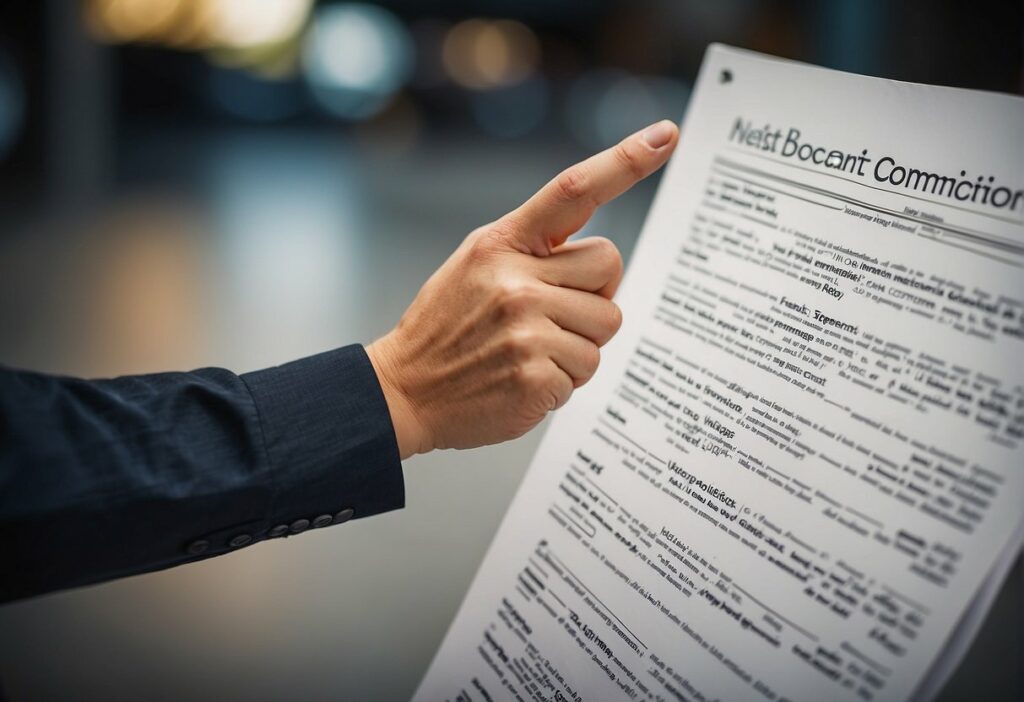What Are Effective Ways to Communicate My Needs Without Causing Conflict: A Straight-Talking Guide

Communicating needs effectively is a vital part of interacting with others while maintaining harmonious relationships.
Whether it’s in the workplace, within family dynamics, or among friends, how I express what I need can significantly impact the outcome of an interaction.
The challenge often lies in doing so without triggering defensiveness or conflict. This requires not only clarity and confidence in my message but also a level of tact and understanding of the other person’s perspective.
To navigate this delicate process, it’s essential that I familiarize myself with the nuances of different communication styles and develop an approach that can be both assertive and empathetic.
This involves articulating my needs in a way that is direct and honest, yet considerate of the other person’s feelings and potential reactions.
By managing my expectations and being prepared for various responses, I can engage in a dialogue that fosters mutual understanding rather than animosity.
Practicing empathy is integral when I communicate my needs.
Ensuring that I am listening as much as I am speaking helps in cultivating a sense of compassion towards the person I’m communicating with.
This creates an environment where both parties feel heard and respected, paving the way for resolution without conflict.
Balancing expressing my needs with an empathy-driven approach can lead to more constructive and less confrontational interactions.
Key Takeaways
- Effective communication of needs involves clarity and empathy.
- Being aware of and responsive to others’ emotions can prevent conflict.
- Listening actively supports a two-way understanding in conversations.
Understanding Communication Styles

I recognize that grasping different communication styles is crucial for conveying my needs effectively. Let’s explore how each style works.
Passive Communication
I often notice passive communicators avoid expressing their own desires or feelings.
They might say, “Whatever you think is best,” even if they have their own preferences.
- Characteristics: Avoids conflict, allows others to lead
- Outcome: My needs may be ignored
Aggressive Communication
When I’m aggressive in communicating, I solely focus on my needs without considering others.
“I want this done my way now!” exemplifies this approach.
- Characteristics: Domineering, confrontational
- Outcome: May provoke resistance or hostility
Passive-Aggressive Communication
If I’m not direct about my feelings or needs, but express them indirectly, I could be passive-aggressive.
Saying, “Fine, I’ll do it, I always have to do everything anyway,” is typical.
- Characteristics: Sarcastic, sullen
- Outcome: Causes confusion, resentment
Assertive Communication
Assertive communication is when I clearly express my needs and feelings without undermining others.
For example, I might say, “I understand your point, but this is important to me.”
- Characteristics: Honest, respectful
- Outcome: Balanced consideration for all parties involved
Expressing Needs Clearly

When communicating my needs, it’s crucial to be clear and precise to avoid misunderstandings and conflicts.
‘I’ Statements
I make it a point to use ‘I’ statements when expressing my needs.
This approach makes my communication less accusatory and more centered on my feelings and experiences. For instance:
- Ineffective: “You never listen to me.”
- Effective: “I feel unheard when I’m not given a chance to speak.”
Being Specific
I aim to be as specific as possible. Vague statements can lead to confusion and misinterpretation. Here’s an example of how I keep my requests specific:
- Vague: “I need help around the house.”
- Specific: “I could really use a hand with washing the dishes after dinner.”
Active Listening
I believe that active listening is a two-way street.
While expressing my needs, I also give my full attention to others.
This ensures that I understand their perspective and can address any concerns they have right away.
Key active listening techniques include:
- Nodding and making eye contact.
- Paraphrasing to confirm understanding: “So, what you’re saying is…”
Managing Expectations and Responses

I’ve found that clear communication is key to managing expectations and responses. It helps to avoid misunderstandings and reduces conflict.
Setting Boundaries
I make sure to establish my limits from the start.
For example, I’ll say, “I’m comfortable discussing this topic, but I’d rather not talk about that.”
It’s also helpful to be specific about my availability: “I can chat any time before 5 PM.”
Anticipating Reactions
I try to predict how the other person might respond.
If I think they’ll be upset, I’ll frame my message to be empathetic: “I understand this might be disappointing, but here’s why I need to do this.”
De-escalation Techniques
If tensions rise, I use de-escalation strategies.
A good one is reflective listening: I repeat back what they’ve said to show I understand.
I might say, “It sounds like you’re feeling frustrated because…” This usually helps to calm things down.
Practicing Empathy and Compassion

When I’m trying to communicate my needs, I find that considering the other person’s perspective makes a big difference. I ask myself, “How might they feel about what I’m about to say?”
Sometimes, I take a moment to acknowledge their feelings or situation before I bring up my own needs. For instance, I might say, “I see you’re really busy with the project, and I appreciate your hard work.”
Empathy is key, as it helps me to understand their emotions and reactions. To practice empathy, I do the following:
- Listen Actively: I give them my full attention when they’re speaking. This means no interrupting and no planning my response while they’re talking.
- Validate Their Feelings: Even if I don’t agree, I acknowledge that their feelings are real. For example, “It sounds like you’re feeling frustrated, that must be tough.”
- Ask Questions: I ask open-ended questions to get a better understanding of what they’re experiencing.
Compassion is closely linked with empathy, but it’s more about my response to their feelings. I try to show kindness and care, regardless of the situation. This might look like:
- Offering help where I can: “I can see you’re swamped; how can I help?”
- Being patient: taking deep breaths before responding in a stressful situation.
- Expressing concern: “I’m here if you need to talk.”
Both empathy and compassion create a softer, more receptive atmosphere for communication. It’s easier for me to express my needs when the other person feels heard and cared for. It’s all about mutuality—meeting halfway to ensure everyone’s needs are considered.
